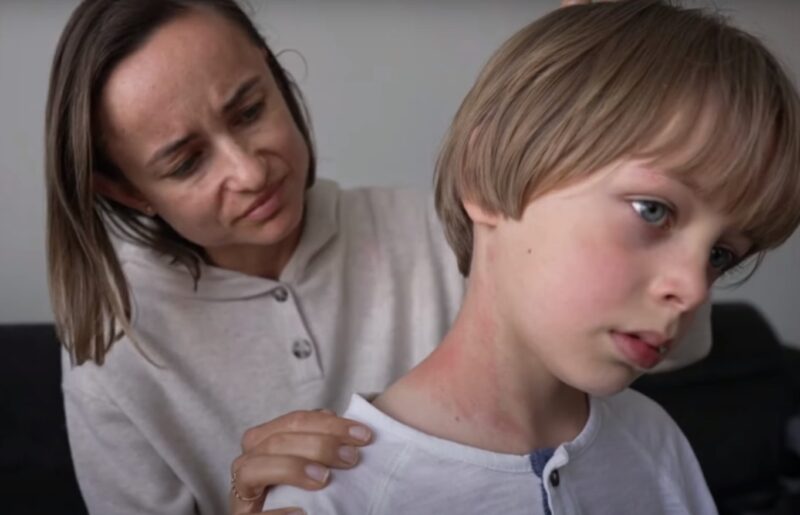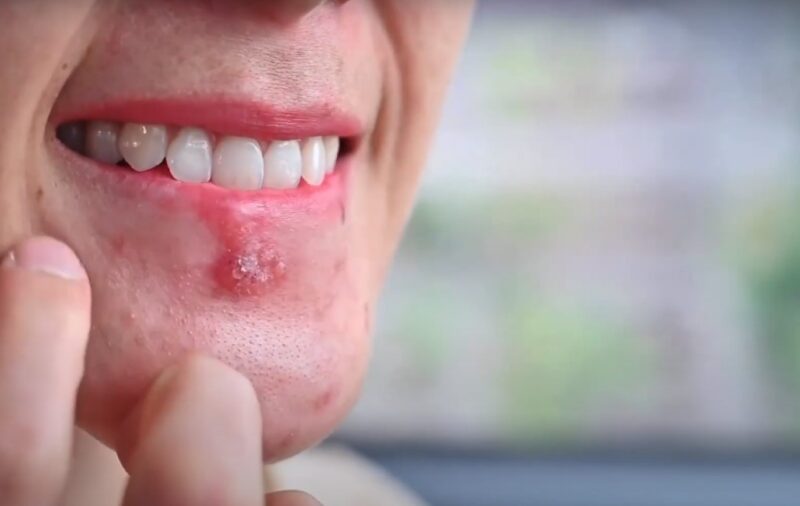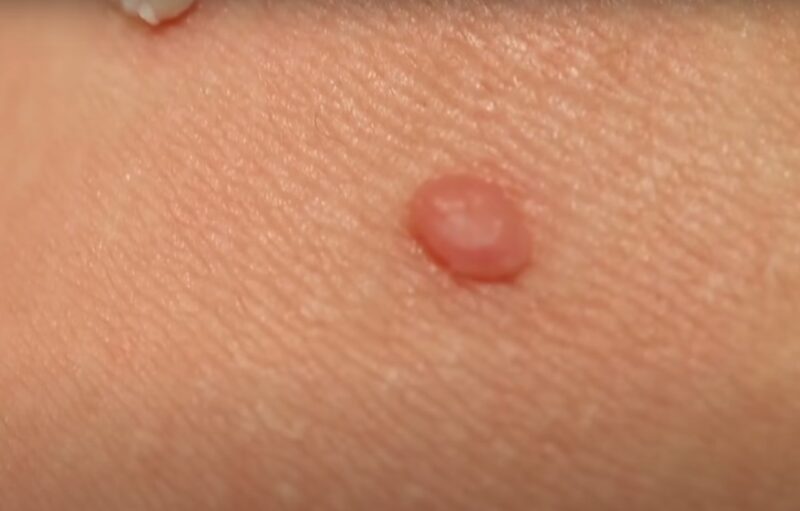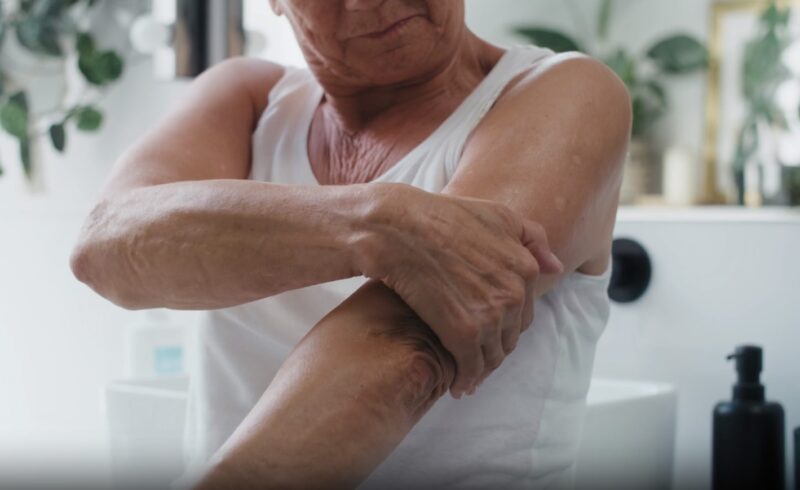Skin, the largest organ of the human body, serves as the first line of defense against a myriad of infections. However, its exposed position makes it particularly vulnerable to a variety of contagious diseases. Understanding these conditions not only helps in early detection and treatment but also in preventing their spread.
This article shines a light on 5 common contagious skin diseases and infections, unpacking their causes, symptoms, and treatments. We aim to arm you with the knowledge needed to protect yourself and those around you.
Key Information
- Impetigo, Ringworm, Scabies, Herpes Simplex Virus, and Molluscum Contagiosum are contagious skin conditions caused by bacteria, fungi, mites, viruses,
1. Impetigo

Impetigo is a highly contagious bacterial skin infection, mostly affecting children but can occur in adults too. It’s primarily caused by two types of bacteria: Staphylococcus aureus and Streptococcus pyogenes. These bacteria can enter the skin through small cuts, insect bites, or even healthy skin.
Symptoms
The infection starts with red sores that quickly burst open, ooze for several days, and then form a yellowish-brown crust that looks like honey or brown sugar. Besides their appearance, these sores can be very itchy and sore.
They are most commonly found around the nose and mouth but can spread to other parts of the body through touch, clothing, and towels.
Treatment
Treatment for impetigo usually involves antibiotic ointment for mild cases or oral antibiotics for more severe cases. It’s important to wash and dry the affected area before applying the antibiotic cream and to wash hands thoroughly afterward to prevent the spreading of the infection.
In addition to medical treatment, maintaining good hygiene and keeping nails short can help prevent the spread of impetigo.
2. Ringworm (Tinea)
Ringworm, despite its name, is a fungal infection of the skin, scalp, feet (athlete’s foot), or nails and is not an actual worm. The fungus thrives in warm, moist environments and can be spread through direct contact with an infected person or animal, or by touching contaminated objects or surfaces.
Symptoms
The hallmark sign of ringworm is a red, itchy, circular rash with clearer skin in the middle, giving it a ring-like appearance. On the scalp, it can lead to scaly, bald patches, while an athlete’s foot causes itching, burning, and cracked skin between the toes. The rash can spread with scratching.
Treatment
Topical antifungal creams are effective for treating skin infections, while medicated shampoos help control scalp ringworm. In severe or resistant cases, doctors may prescribe oral antifungal medications.
Preventive measures include keeping the skin clean and dry, not sharing personal items, and wearing footwear in communal showers or locker rooms.
3. Scabies
Scabies is a skin infestation caused by a mite called Sarcoptes scabiei. The mites burrow into the skin to live and lay eggs, leading to an itchy rash. Scabies is highly contagious and can spread through prolonged skin-to-skin contact or sharing bedding or clothing with an infected person.
Symptoms
The intense itching associated with scabies is often worse at night and can lead to difficulty sleeping. The rash can appear anywhere on the body but is most commonly found on the hands, between fingers, underarms, and around the waist.
The burrows may appear as tiny raised or discolored lines on the skin.
Treatment
Treatment involves prescription creams and lotions that kill the scabies mites and their eggs, which must be applied to the entire body from the neck down. Oral medications may be necessary in severe cases or for those who do not respond to topical treatments.
It’s crucial for all household members and close contacts to be treated at the same time to prevent re-infestation.
In addition to these measures, maintaining a healthy skin barrier is crucial, which includes addressing concerns like persistent dryness even after applying moisturizers, a common issue that can compromise the skin’s defense against infections.
4. Herpes Simplex Virus (HSV)

The Herpes Simplex Virus, with its two types, HSV-1 and HSV-2, causes infections that can go through periods of dormancy. While HSV-1 is mainly transmitted through oral-to-oral contact, resulting in cold sores, HSV-2 is primarily sexually transmitted, leading to genital herpes.
Both types can cause symptoms in the genital area, mouth, and face.
Symptoms
Symptoms of HSV include painful blisters or ulcers at the site of infection, which can be preceded by tingling, itching, or burning sensations. During an initial outbreak, some may experience flu-like symptoms such as fever, body aches, and swollen lymph nodes. Recurrent outbreaks are usually milder and shorter in duration.
Treatment
While there is no cure for HSV, antiviral medications can help manage symptoms and reduce the risk of transmission to others. These medications can be taken during an outbreak to shorten its duration and severity or daily as suppressive therapy to reduce the frequency of outbreaks.
Good hygiene and avoiding direct contact with the sores can also help prevent the spread of the virus.
5. Molluscum Contagiosum

Molluscum contagiosum is a viral infection caused by the molluscum contagiosum virus (MCV), leading to small, painless bumps on the skin. The virus can spread through direct contact with an infected person or through contact with contaminated objects.
Children, people with weakened immune systems, and those living in tropical climates are more susceptible.
Symptoms
The bumps are usually flesh-colored or pink and have a characteristic dimple in the center. They can appear alone or in groups and are most often found on the face, arms, and legs. Though generally painless, the bumps can become inflamed or itchy, especially if scratched or irritated.
Treatment
In many cases, molluscum contagiosum will resolve on its own without the need for treatment, typically within 6 to 12 months. However, treatments are available to remove the bumps for cosmetic reasons, to prevent spreading to other parts of the body, or to avoid transmission to others.
Options include cryotherapy, curettage, and topical treatments, each of which can be effective but may need to be repeated for best results.
FAQs
Can impetigo lead to more serious health issues if left untreated?
Yes, if left untreated, impetigo can lead to complications like cellulitis, a more severe skin infection that can spread to the lymph nodes and bloodstream.
Are pets at risk of catching ringworm from humans, and vice versa?
Yes, ringworms can spread between humans and pets. Both can infect the other, so it’s important to treat all affected household members, including pets.
Can scabies be prevented with regular hygiene practices?
While regular hygiene can reduce the risk of many skin infections, scabies are highly contagious and can spread easily through direct skin-to-skin contact, so hygiene alone may not prevent it.
Is there a vaccine available for Herpes Simplex Virus?
Currently, there is no vaccine available to prevent HSV-1 or HSV-2 infections. Research is ongoing to develop vaccines.
Can molluscum contagiosum spread through swimming pools?
Yes, molluscum contagiosum can spread in warm, wet environments, including swimming pools, especially if skin touches surfaces where the virus may be present.
Are individuals with eczema more susceptible to skin infections like impetigo?
Yes, individuals with eczema or other skin conditions that break the skin barrier are more susceptible to bacterial skin infections like impetigo because the broken skin can serve as an entry point for bacteria.
Summary
While contagious skin diseases and infections can be unsettling, understanding them is the first step toward prevention and effective treatment. Recognizing symptoms early and consulting a healthcare professional can significantly reduce the spread and impact of these conditions.
Moreover, seasonal changes, particularly during the colder months, can exacerbate or trigger specific skin conditions, underscoring the importance of adapting our skincare routines to the weather.
By practicing good hygiene and taking preventive measures, we can protect ourselves and contribute to the well-being of our communities. Let’s not allow fear to breed ignorance; instead, let knowledge empower us to take action.

